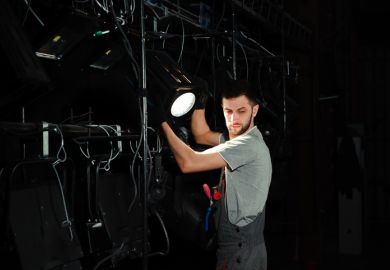“Atmospheric changes” that “awaken forgotten selves” is how Proust neatly explains mood in In Search of Lost Time, cited by Mary Cappello in her own curiously described “mood almanack”. Cappello has a good ear for a pleasing quotation, and she derives the book’s title, Life Breaks In, from Virginia Woolf (pictured above). Cappello’s book, a mercurial and spry account of her passing reflections, recollections and sensations, begins with Woolf musing over how to write “a real diary: something in which I could see changes, trace moods developing; but then I should have to speak of the soul”. There’s a charm to Cappello’s efforts at emulating Woolf’s soulful diary-keeping, and what follows is a text that is largely personal rather than scholarly, an intimate effort at documenting mood in individual rather than purely academic terms.
And yet if this is a personal text, this is not so much in the particularity of the memories that Cappello recalls – none of which can be as remarkable or illuminating to us as they are to the author – but instead in the idiosyncrasies of her fragmentary style and the obscured logic by which she organises her material. In reading this book, we are guided only by the writer’s subjectivity, and although Cappello is admirably candid about this almanac of “miscellany”, encouraging us to “float into and out” of her moods, the book, sadly, sacrifices coherence for atmosphere. One of the difficulties of the text is that it flits so rapidly (perhaps like moods themselves), moving from different experiences and observations. Cappello’s moods are variously found in a song, a sound, a film, a photograph and a room, and although it’s clear how those things might evoke different moods, she never dares to alight upon a solid definition of what might constitute mood.
Perhaps the point here is that mood is that insubstantial, ephemeral thing, resistant to containment. Cappello duly gripes a little about the crude “data mining” approach to mood she perceives in a “happiness index” invented by US scientists in 2013. But scientists, academics and scholars only strive to gauge phenomena in their different ways, and Cappello’s meandering prose itself makes a case for a more meticulous and careful mode of documentation, especially when mood seems something both incorporeal and important. Writing is Cappello’s means of data capture, and the evocative writers she cites prove how language captures the experience of mood with precision and particularity. The difficulty here is that this also puts enormous pressure on Cappello’s own writing, which is not always equal to the task.
In many ways, this is a tantalising book, full of unfinished thoughts. “In what sense are iPhones replacements for our moods as holding environments?” Cappello enquires at one moment. It’s a great question, answered only vaguely here. In our cyborg age, isn’t mood, unpredictable and volatile, the only thing that is uniquely human and not replicable in robots? The stakes seem so high in mood that we must figure out how to make better sense of it.
Shahidha Bari is lecturer in Romanticism, Queen Mary University of London.
Life Breaks In (A Mood Almanack)
By Mary Cappello
University of Chicago Press, 408pp, £20.50
ISBN 9780226356068 and 6235 (e-book)
Published 14 November 2016
POSTSCRIPT:
Print headline: Exactly how are we feeling now?
Register to continue
Why register?
- Registration is free and only takes a moment
- Once registered, you can read 3 articles a month
- Sign up for our newsletter
Subscribe
Or subscribe for unlimited access to:
- Unlimited access to news, views, insights & reviews
- Digital editions
- Digital access to THE’s university and college rankings analysis
Already registered or a current subscriber?




